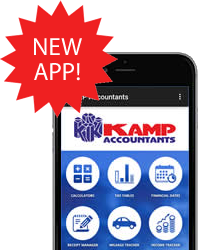The correct way with directors' NICs
Newsletter issue - August 2019.
In certain situations the non-cumulative nature for calculating employee Class 1 National Insurance Contributions (NICs) makes it possible to manipulate earnings to reduce the overall amount payable by taking advantage of the lower rate of primary Class 1 contributions payable once the upper earnings limit has been reached. This means that that an employee who is paid £2,000 each month of the year will pay considerably more in primary contributions than someone who is paid £600 for 11 months and £23,400 for one month, even though their total earnings for the year are the same.
Company directors often have greater scope to influence the amount and timing of payments, so to prevent manipulation of the rules, special provisions apply to all directors for NIC calculation purposes. Broadly, directors' NICs are calculated on a cumulative annual basis. This applies even where they are paid, say, monthly or leave the company during the year.
The only exception to this rule is where a director is first appointed during the course of a tax year. Where this is the case, the earnings period is the period from the date of appointment to the end of the tax year, measured in weeks. The calculation of the earnings period includes the tax week of appointment, plus all remaining complete weeks in the tax year (i.e. week 53 is ignored for this purpose). This is known as the pro rata earnings period.
Example
George becomes a company director in week 44 of the 2019-20 tax year.
For NIC purposes, the primary threshold and upper earnings limit are calculated by multiplying the weekly values by 9, because the earnings period starts with the week of appointment.
In 2019-20, George will pay NIC at the main rate of 12% on his director's earnings between £1,494 (9 × £166) (the primary threshold) and £8,658 (9 × £962) (the upper earnings limit), and at the additional 2% rate on all earnings above £8,658 paid up to 5 April 2020.
The significance of being a company director is that an annual earnings period must be applied for NIC purposes. It is therefore important to be clear as to who the directors of a company actually are. For example, there may be persons within the organisation who are called directors, but for whom that is just an honorary title.
Companies can save time and money by calculating directors' NIC in a similar way to other employees. Instead of paying very high levels of NIC on a short-term basis, directors who are paid regularly (e.g. directors who have contracts of service with their companies) can spread their contributions evenly throughout the tax year. The earnings period remains an annual earnings period, but contributions are made on account throughout the tax year. A recalculation on an annual basis is performed when the last payment is made and any outstanding National Insurance due is paid at that time.
 Cookies are small text files that are stored on your computer when you visit a website. They are mainly used as a way of improving the website functionalities or to provide more advanced statistical data.
Cookies are small text files that are stored on your computer when you visit a website. They are mainly used as a way of improving the website functionalities or to provide more advanced statistical data.










